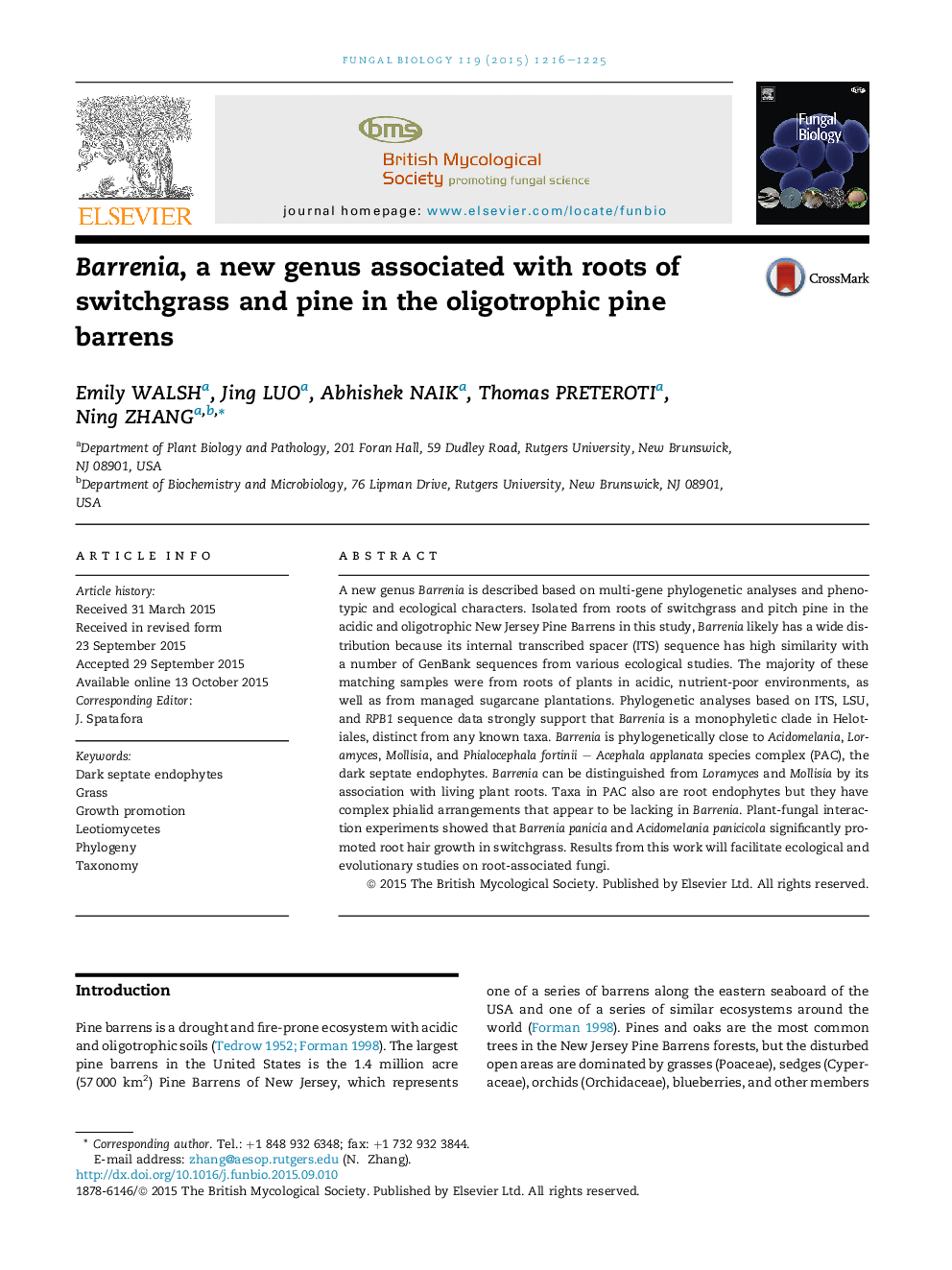| Article ID | Journal | Published Year | Pages | File Type |
|---|---|---|---|---|
| 4356841 | Fungal Biology | 2015 | 10 Pages |
•A new genus Barrenia was uncovered from grass and pine roots in pine barrens.•Two new species of Barrenia were described based on multi-locus phylogeny.•Barrenia panicia and Acidomelania panicicola promoted switchgrass root hair growth.
A new genus Barrenia is described based on multi-gene phylogenetic analyses and phenotypic and ecological characters. Isolated from roots of switchgrass and pitch pine in the acidic and oligotrophic New Jersey Pine Barrens in this study, Barrenia likely has a wide distribution because its internal transcribed spacer (ITS) sequence has high similarity with a number of GenBank sequences from various ecological studies. The majority of these matching samples were from roots of plants in acidic, nutrient-poor environments, as well as from managed sugarcane plantations. Phylogenetic analyses based on ITS, LSU, and RPB1 sequence data strongly support that Barrenia is a monophyletic clade in Helotiales, distinct from any known taxa. Barrenia is phylogenetically close to Acidomelania, Loramyces, Mollisia, and Phialocephala fortinii – Acephala applanata species complex (PAC), the dark septate endophytes. Barrenia can be distinguished from Loramyces and Mollisia by its association with living plant roots. Taxa in PAC also are root endophytes but they have complex phialid arrangements that appear to be lacking in Barrenia. Plant-fungal interaction experiments showed that Barrenia panicia and Acidomelania panicicola significantly promoted root hair growth in switchgrass. Results from this work will facilitate ecological and evolutionary studies on root-associated fungi.
